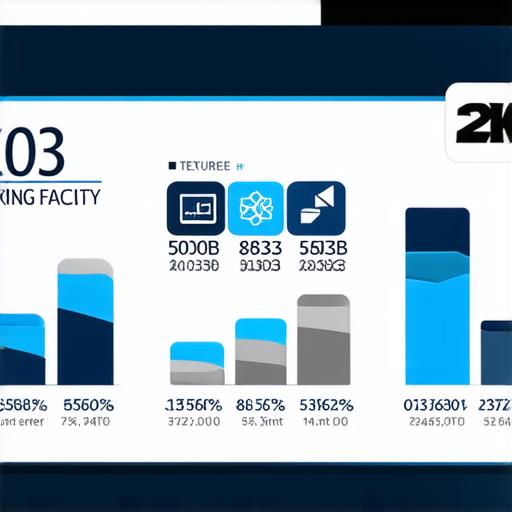Outsourcing jobs from the United States has become a hot topic in recent years. The practice involves hiring employees to work for a company that is located in another country, often at a lower cost.
While there are many benefits to outsourcing, such as increased efficiency and cost savings, it can also have negative consequences.
One of the most significant issues with outsourcing jobs from the United States is the loss of jobs and economic impact on American workers. This has been especially true in industries such as manufacturing, where large numbers of jobs have been sent overseas.
The loss of these jobs has led to a decline in the purchasing power of American consumers, which in turn has had a negative impact on the overall economy.
Another issue with outsourcing is the quality of work that is being produced. While some companies may be able to find highly skilled workers in other countries, this is not always the case.
This can result in lower-quality products or services being produced, which can damage a company’s reputation and lead to a loss of customers.
The rise of outsourcing has also led to increased competition among businesses, as companies look to outsource jobs to stay competitive in the global marketplace. This can make it more difficult for American companies to compete on price, as they may not be able to match the lower costs of foreign competitors.
Despite these challenges, there are many benefits to outsourcing jobs from the United States. One of the main advantages is increased efficiency, as companies can take advantage of the skills and expertise of workers in other countries.
This can lead to faster turnaround times and better quality work, which can ultimately benefit the company’s bottom line.
Another benefit of outsourcing is cost savings. By hiring employees in other countries, companies can reduce their labor costs, which can help them stay competitive in the marketplace. Additionally, many foreign workers are highly educated and have advanced degrees, which can lead to better quality work being produced.
However, these benefits come with a price. The loss of jobs and economic impact on American workers is a major concern for many people. In addition, the quality of work that is being produced by outsourced workers can be inconsistent, leading to lower-quality products or services being produced.
This can damage a company’s reputation and lead to a loss of customers.
Another issue with outsourcing is the competition among businesses. As more companies outsource jobs, it becomes increasingly difficult for American companies to compete on price. This can make it more challenging for these companies to stay competitive in the global marketplace.
Despite these challenges, there are many benefits to outsourcing jobs from the United States. One of the main advantages is increased efficiency, as companies can take advantage of the skills and expertise of workers in other countries.
This can lead to faster turnaround times and better quality work, which can ultimately benefit the company’s bottom line.
Another benefit of outsourcing is cost savings. By hiring employees in other countries, companies can reduce their labor costs, which can help them stay competitive in the marketplace. Additionally, many foreign workers are highly educated and have advanced degrees, which can lead to better quality work being produced.
However, these benefits come with a price. The loss of jobs and economic impact on American workers is a major concern for many people. In addition, the quality of work that is being produced by outsourced workers can be inconsistent, leading to lower-quality products or services being produced.
This can damage a company’s reputation and lead to a loss of customers.
Another issue with outsourcing is the competition among businesses. As more companies outsource jobs, it becomes increasingly difficult for American companies to compete on price. This can make it more challenging for these companies to stay competitive in the global marketplace.
Despite these challenges, there are many benefits to outsourcing jobs from the United States. One of the main advantages is increased efficiency, as companies can take advantage of the skills and expertise of workers in other countries.
This can lead to faster turnaround times and better quality work, which can ultimately benefit the company’s bottom line.
Another benefit of outsourcing is cost savings. By hiring employees in other countries, companies can reduce their labor costs, which can help them stay competitive in the marketplace. Additionally, many foreign workers are highly educated and have advanced degrees, which can lead to better quality work being produced.
However, these benefits come with a price. The loss of jobs and economic impact on American workers is a major concern for many people. In addition, the quality of work that is being produced by outsourced workers can be inconsistent, leading to lower-quality products or services being produced.
This can damage a company’s reputation and lead to a loss of customers.
Another issue with outsourcing is the competition among businesses. As more companies outsource jobs, it becomes increasingly difficult for American companies to compete on price. This can make it more challenging for these companies to stay competitive in the global marketplace.
Despite these challenges, there are many benefits to outsourcing jobs from the United States. One of the main advantages is increased efficiency, as companies can take advantage of the skills and expertise of workers in other countries.

This can lead to faster turnaround times and better quality work, which can ultimately benefit the company’s bottom line.
Another benefit of outsourcing is cost savings. By hiring employees in other countries, companies can reduce their labor costs, which can help them stay competitive in the marketplace. Additionally, many foreign workers are highly educated and have advanced degrees, which can lead to better quality work being produced.
However, these benefits come with a price. The loss of jobs and economic impact on American workers is a major concern for many people. In addition, the quality of work that is being produced by outsourced workers can be inconsistent, leading to lower-quality products or services being produced.
This can damage a company’s reputation and lead to a loss of customers.
Another issue with outsourcing is the competition among businesses. As more companies outsource jobs, it becomes increasingly difficult for American companies to compete on price. This can make it more challenging for these companies to stay competitive in the global marketplace.
Despite these challenges, there are many benefits to outsourcing jobs from the United States. One of the main advantages is increased efficiency, as companies can take advantage of the skills and expertise of workers in other countries.
This can lead to faster turnaround times and better quality work, which can ultimately benefit the company’s bottom line.
Another benefit of outsourcing is cost savings. By hiring employees in other countries, companies can reduce their labor costs, which can help them stay competitive in the marketplace. Additionally, many foreign workers are highly educated and have advanced degrees, which can lead to better quality work being produced.
However, these benefits come with a price. The loss of jobs and economic impact on American workers is a major concern for many people. In addition, the quality of work that is being produced by outsourced workers can be inconsistent, leading to lower-quality products or services being produced.
This can damage a company’s reputation and lead to a loss of customers.
Another issue with outsourcing is the competition among businesses. As more companies outsource jobs, it becomes increasingly difficult for American companies to compete on price. This can make it more challenging for these companies to stay competitive in the global marketplace.
Despite these challenges, there are many benefits to outsourcing jobs from the United States. One of the main advantages is increased efficiency, as companies can take advantage of the skills and expertise of workers in other countries.



















